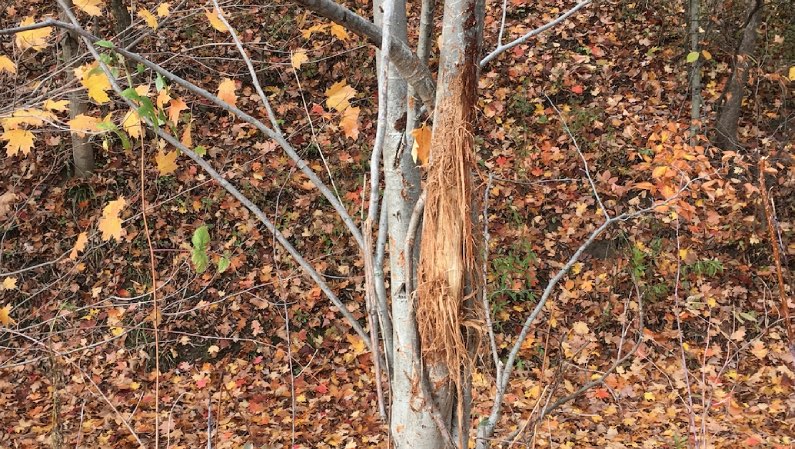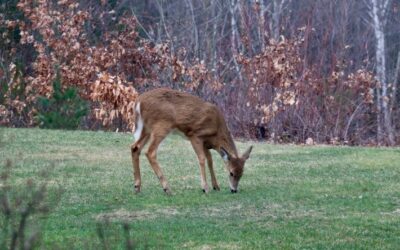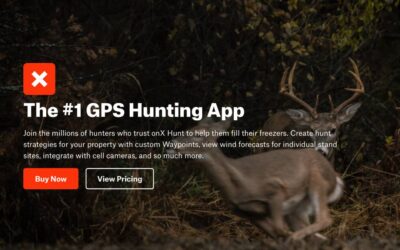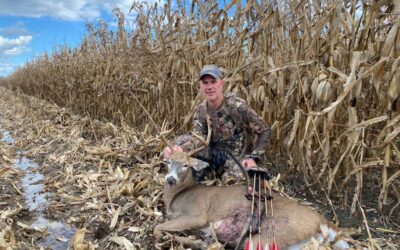While I am talking about buck rubs in this article, I am only talking about fresh buck rubs. A buck rub that has not been hit since the year prior or even since early season should no longer hold its worth as a place to hunt. An old rub will look dry, whereas a fresh buck rub will look like a healthy tree that has been shredded by antlers.
What is a Buck Rub?
Buck rubs are the way that whitetail bucks communicate to the other deer in the herd. Most buck rubs are found on trees, and some are found in the brush.
The significance of a buck rub can be determined by how big the rub is and where it is located on a property.
The scent left behind
Bucks have a specific scent that is released when they are making a rub. This scent gland is located right in between the antlers on the forehead.
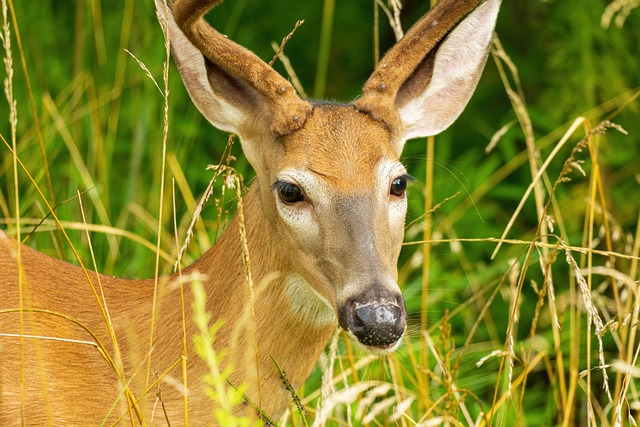 The scent tends to get stronger as the deer grows in age. Therefore, buck rubs can determine a buck’s age, social status (how dominant he is), and breeding status.
The scent tends to get stronger as the deer grows in age. Therefore, buck rubs can determine a buck’s age, social status (how dominant he is), and breeding status.
Does also have this gland but they are less likely to use it. It does happen sometimes, but you cannot really see the effects on a tree.
The importance of the scents is more for deer and humans focus more on the visual aspects of buck rubs.
Table of Contents
What is a Buck Rub?
Different Sizes of Buck Rubs
What is a Rub Line?
Rubs Used for Removing Velvet
Early Season Buck Rubs
Rut Season Buck Rubs
How to Find and Hunt Mature Buck Rubs
What is a Signpost Rub?
Random Buck Rubs
Conclusion of Buck Rubs
Different Sizes of Buck Rubs and Their Meaning
Any buck reserves the right to rub any tree they feel the need to. The next three categories of buck rubs are generalizations that do have exceptions occasionally in nature.
The reason that hunters use visual aspects of buck rubs is to find the most mature buck’s bedding area and their travel corridors. These mature bucks do leave signs and breadcrumbs, you just need to locate them.
Buck Rubs on Small Tree
A small tree has a trunk diameter of 1-3 inches and most of the time is not taller than 6-10 feet.
Buck rubs found on smaller trees tend to be created by ½ – 2 ½-year-old bucks and are not noticeably destroyed. These rubs are not significant for hunters that are chasing mature whitetail bucks.
However, if a small tree has been broken or noticeably rubbed, this can mean that a buck with nice antlers may have done most of the damage. My suggestion would be to keep an eye on the area that a small tree was destroyed and see if this is repeated as a pattern in that area.
Buck Rubs on Medium Trees
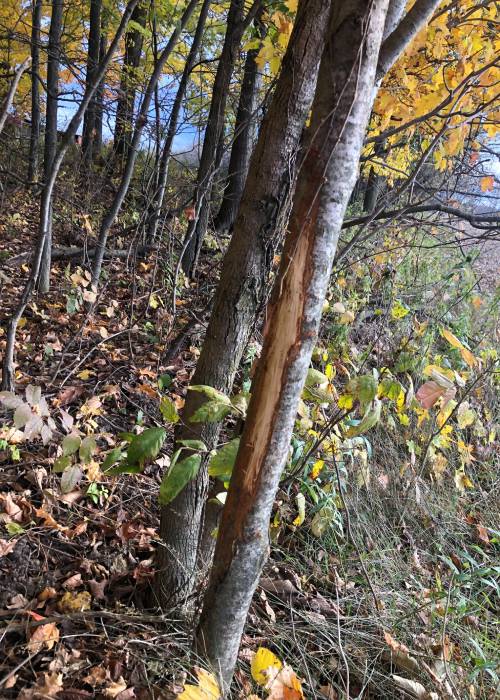
This Buck Rub is not the biggest in the world. However, it could still be worth hunting if it was a part of a rub line or a known bedding area for a specific buck.
Medium-sized trees normally have a diameter of roughly 4-10 inches. These trees are too small to put a tree stand but noticeably taller than a small tree.
Medium size trees are the most prime trees for buck rubbing in my experience. Deer that are 3 ½ or older are the most likely to be doing the damage to these trees.
If you see a medium-sized tree that has a rub on it above your waist you can assume that a large antlered deer made that buck rub. The bigger the rub the bigger the deer.
Buck Rubs on Big Trees
Big trees have a diameter bigger than 10 inches and are tall enough to put a tree stand.
The buck rubs on these big trees signify a dominant buck nearby. They tend to be created during the pre-rut and rut when testosterone levels are through the roof.
Where I hunt in Michigan, I have not seen many of these sized trees being rubbed by bucks. However, the most mature bucks rub larger trees. If you find a large tree that has a noticeable rub on it, you are on the first steps to finding the most mature buck on your property. (Unless you hunt over 500 acres, then there are probably multiple mature bucks on your property)
These types of buck rubs are the best types to find because they are normally located in the right place and can be used in your hunting plan to kill a mature whitetail buck.
What is a Rub Line?
A rub line is a series of rubs that form a path in the direction of a whitetail buck’s travel patterns. Rub lines can be used by multiple bucks as well.
When looking for a rub line, you are not looking for 2-5 rubs. You want to see at least 6 or more rubs on a 50 or less yard line in the same direction.
These rub lines are often located on the paths taken by one or more bucks from a bedding area to a food source or a food source to a bedding area.
How to Analyze a Rub Line
When looking at a rub line, you want to look at which direction the rubs are facing. If they are facing the direction where the food source is, then you can most likely infer that the rubs are created on the way back to the bedding area from a night of feeding. If the rubs are facing the direction of the bedding area, then you can assume that the rubs were created as the deer was traveling from their bedding area to the food source.
If you want to hunt these rub lines, you should try to set some trail cameras near them. This will allow you to see where the buck giving you shots during daylight hours while traveling the rub line.
This will give you the best opportunity to get a shot at a mature buck making these scrapes.
The other important part is how many scrapes are found in a short distance. The more buck rubs there are in a short distance the more that travel path is used by bucks.
A good example of this would be a wooded area that produces lots of acorns in one area and a bedding area that is full of thick brush and deadfalls. You will most likely find these rub lines coming to and from the bedding area and the food source.
These rub lines are significant to finding where the bucks on a property are traveling. It will also be useful for planning your hunting spots before the season begins to capitalize on these travel paths.
Rubs Used for Removing Velvet
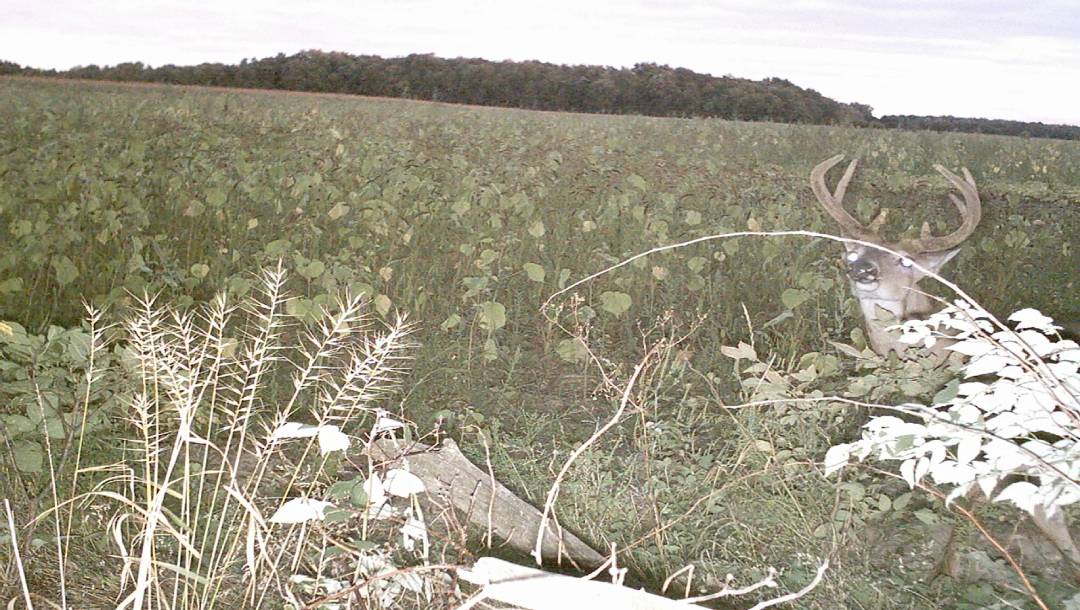
This Buck will need to get that velvet coating off. They do that by rubbing trees to speed up the process.
Bucks shed their antlers every winter. When the antlers grow back, they have a soft coating around the antlers that help the antlers to grow. This is called velvet.
Once the buck’s antlers have grown to their full potential for that year, they need to shed the velvet coating.
To speed up the process of shedding their velvet, bucks will often rub a tree. the rubbing will cause the velvet to be scraped off.
These types of rubs generally do not mean anything because velvet tends to be rubbed completely off in under 24 hours. This type of buck rub happens often but should not determine any part of your hunting plans.
You can expect to see some of these types of rubs from late August through the middle of September.
Early Season Buck Rubs
Buck rubs found during the early season of deer hunting are most directly correlated with travel pathways that a buck or multiple bucks are using to get to and from bedding and food sources.
Another reason that bucks start rubbing in early September until the pre-rut is to build up their neck muscles. It is important for bucks, especially mature bucks, to be well prepared for the rut. The rut will have lots of fighting and running involved. The stronger they are the better chance they will have to win against other bucks in the area.
The third reason that buck rubs are made in the early season is to gain control of their living area. The mature bucks will be very dominant in their area and will mark it by rubbing trees. The rubs will be marked with the glands from their forehead and will leave their signature scent. This will claim the area as theirs. This will only start to happen once bucks break out of their bachelor groups.
Bucks are also slowly gaining more testosterone as the rut nears. Rubbing a tree is a way for the buck to release some of that testosterone and will make social harmony among the heard easier.
Rut Season Buck Rubs
Pre-Rut time buck rubs are the best way to find big bucks and where their main living area is. This is because as the anticipation of the rut is fueling these buck’s testosterone, they want to assert dominance over smaller bucks.
The assertion of dominance will set the standards for breeding power. Whitetail bucks are a species fueled by breeding. They want to breed as many possible females as they can each rut.
During the pre-rut, mature bucks are running and looking for females that are in estrus (ready to breed). They will often travel to look for does that are in estrus and along their way, they will rub trees to mark their territory.
The rut is when you will start to see bigger trees being rubbed by bigger bucks. Their testosterone levels are at their peak during this time. They will be more apt to rub trees, make scrapes, and fight bucks all to breed a doe.
To hunt over rubs during the rut and pre-rut, you want to focus on where many big scrapes are. This will be the sign that a mature deer is in the area, and he is cruising the area. As hunters, we need to identify the opportunity, get out there, and hope that mature buck makes a mistake.
How to Find and Hunt Mature Buck Rubs
These signs of big buck rubs are one single factor that should be taken into consideration for your hunting plan. There are many other factors that can play a part in where you sit, but rubs should never be overlooked.
Find Big Rubs Near a Bedding Area
When talking about big buck rubs that you want to hunt over or near, it is crucial to find the ‘living room’ or main bedding area of the mature buck making the rubs. The bedding area is the number one place that smart bucks spend most of their time during the day.
If you are scouting a property or hunting and come across a thick bedding area, make sure to look around and see if you can find some buck rubs near that bedding area. If there is only one small rub in that area, I would not recommend hunting it unless you are looking to shoot a small buck or a doe.
However, if you find multiple medium-sized trees that are heavily rubbed that is also near a bedding area. It is worth setting up a hunting spot that is strategically placed near that bedding area but not in it.
How to Hunt that Bedding Area
So now you have found signs of mature buck rubs condensed into an area that is most likely a mature buck’s bedding area or ‘living room’. It is important to hunt this area properly and not spook the mature buck into leaving the area.
I would recommend using a tree stand to stay out of the eye line of this mature buck. He has grown into a mature buck because he is smart enough to stay alive for that long. A tree stand will give the most comfortability while you are hunting as well.
A ground blind would also be a great option; however, I personally like the visibility of a tree stands better.
To hunt this bedding area effectively and get a shot at this buck. You will want to place your hunting spot near the bedding area. If you can find a good tree that is maybe 20 yards off the path that is traveled from the bedding area to the food source, that is exactly where you will want to be.
It is important to enter in the morning because, during the night, the buck is most likely feeding and not laying in his bed. Being in your hunting stand before the buck comes back to bed down for the day will give you a good chance of catching him traveling back from the food source.
I would recommend hunting all day, especially during the pre-rut and rut. This gives you the best opportunity to catch a mature buck making a mistake. He could get up to stretch his legs, use the bathroom, and maybe do a quick check of his area.
All this could happen in the middle of the day. These are the types of mistakes that we want to capitalize on. Also, it is possible that the buck may travel the same path to go hit the food source before dark as well.
If he never knows you are there, he will be more apt to get up and move during the daylight. That is exactly what you want to happen.
Don’t Make This Costly Mistake
I am adding this part not to call anyone out about hunting these types of bedding areas that are holding big bucks. In fact, I have made this mistake before as well. I want to inform you why it is not a good idea to try to hunt only the evening of these types of places.
The reason has to do with a mature buck being incredibly wise. If the buck smells, sees, or hears you, he may never get up during the daylight because he is slightly spooked and wants to be safe. He may never leave his bedding area if he feels that a hunter or predator is in the woods. This will not only frustrate you but it will also give the deer the idea that something is preying on him.
So, get out there early and stay all day if you can. This will give you the best chances of shooting that mature buck.
What is a Signpost Rub?
A signpost or social rub is a buck rub that is hit by many different mature bucks. This type of rub is extremely uncommon among properties of the average hunter (including myself). The reason for the rarity of these kinds of buck rubs is that most properties do not have more than 2 or 3 mature bucks on them.
A signpost is still a way for bucks to assert dominance, but without many mature bucks in the same area, these types of rubs just do not form. However, smaller bucks may scrape a tree that a mature buck has created. So, in the sense of many different bucks no matter the maturity level, signposts do happen in that form on the average hunting property. You can use these to set trail cameras and see what kind of bucks are hitting the rub. The taller the rub is the more probably chance that at least 1 mature buck is contributing to the rub.
What to do if You Find a Random Buck Rub
Random buck rubs are rubs that are alone. There are no other rubs in the area and there is not a strong sign of mature bucks in the area.
Single buck rubs are created because a buck may have just been passing through the area and decided to rub a tree. No reason other than he wanted to rub a tree. That is why you should not focus on a single buck rub.
These types of rubs you do not want to waste your time hunting over because it is unlikely that a buck will be coming back to freshen up that rub.
Spend some more time trying to find a better area that is holding mature bucks and has better signs of mature buck in the area as I mentioned above.
Conclusion of Buck Rubs
Buck rubs are a great way to find where mature bucks are and how they are moving. This is the first step to chasing a specific whitetail buck and being successful.
All the different types of rubs serve their own purpose and have a place in each hunting plan. I personally like to hunt rub lines during the early and late seasons. During the rut and pre-rut, I like to try to use the bedding area to my advantage and draw bucks out of bedding using a grunt call and rattling antlers.
I hope you enjoyed and learned something new about buck rubs from this article.
Thank you guys for visiting The Whitetail Teacher! If you enjoyed this post make sure to share it with a friend.
Join the Hunters of America Discord Server to become a part of the only hunting discord community.
You can also show support by going over to the socials listed below and giving me a follow. I appreciate it and it helps keep spreading the love for Whitetail Deer Hunting.
If you have any questions or recommendations for new blog posts, please email me and I will respond as quickly as I can: Loganpetzold@thewhitetailteacher.com
Learn, Plan, Execute,
The Whitetail Teacher

